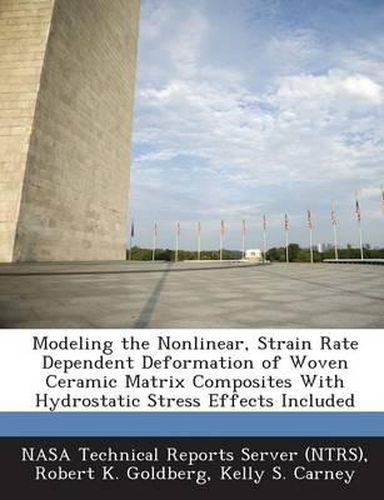Readings Newsletter
Become a Readings Member to make your shopping experience even easier.
Sign in or sign up for free!
You’re not far away from qualifying for FREE standard shipping within Australia
You’ve qualified for FREE standard shipping within Australia
The cart is loading…






An analysis method based on a deformation (as opposed to damage) approach has been developed to model the strain rate dependent, nonlinear deformation of woven ceramic matrix composites with a plain weave fiber architecture. In the developed model, the differences in the tension and compression response have also been considered. State variable based viscoplastic equations originally developed for metals have been modified to analyze the ceramic matrix composites. To account for the tension/compression asymmetry in the material, the effective stress and effective inelastic strain definitions have been modified. The equations have also been modified to account for the fact that in an orthotropic composite the in-plane shear stiffness is independent of the stiffness in the normal directions. The developed equations have been implemented into a commercially available transient dynamic finite element code, LS-DYNA, through the use of user defined subroutines (UMATs). The tensile, compressive, and shear deformation of a representative plain weave woven ceramic matrix composite are computed and compared to experimental results. The computed values correlate well to the experimental data, demonstrating the ability of the model to accurately compute the deformation response of woven ceramic matrix composites.
$9.00 standard shipping within Australia
FREE standard shipping within Australia for orders over $100.00
Express & International shipping calculated at checkout
An analysis method based on a deformation (as opposed to damage) approach has been developed to model the strain rate dependent, nonlinear deformation of woven ceramic matrix composites with a plain weave fiber architecture. In the developed model, the differences in the tension and compression response have also been considered. State variable based viscoplastic equations originally developed for metals have been modified to analyze the ceramic matrix composites. To account for the tension/compression asymmetry in the material, the effective stress and effective inelastic strain definitions have been modified. The equations have also been modified to account for the fact that in an orthotropic composite the in-plane shear stiffness is independent of the stiffness in the normal directions. The developed equations have been implemented into a commercially available transient dynamic finite element code, LS-DYNA, through the use of user defined subroutines (UMATs). The tensile, compressive, and shear deformation of a representative plain weave woven ceramic matrix composite are computed and compared to experimental results. The computed values correlate well to the experimental data, demonstrating the ability of the model to accurately compute the deformation response of woven ceramic matrix composites.